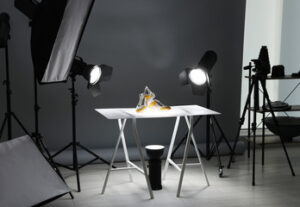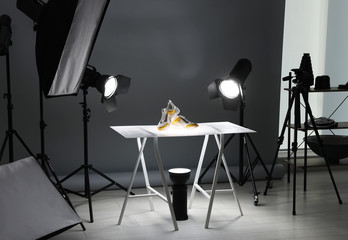One of the most important elements of product photography is lighting. Creating good lighting can be tricky but can make all the difference in the overall image. Proper lighting can also reduce the need for post-production edits. Product photographers can choose from two basic types of light: natural light and artificial light. Natural light can be more affordable but can be difficult to manipulate.
 Most shoppers look for a product through a product photo. Product photos can help you sell your products and build a solid customer base. Product photographs can also promote a company’s image on social media. If you have a photo of a product that is genuinely attractive, your customers are likely to share it with friends.
Most shoppers look for a product through a product photo. Product photos can help you sell your products and build a solid customer base. Product photographs can also promote a company’s image on social media. If you have a photo of a product that is genuinely attractive, your customers are likely to share it with friends.
Product photography pricing depends on the number of items and the amount of time required to shoot them. While experimenting with different rates can be fun, it’s best to stick to a fixed rate when working with clients. Changing rates mid-project can be confusing and cost you more money. Additionally, some clients expect you to supply props or other supplies, so include those costs in your pricing.
Before taking photos of your product, you should set your camera’s aperture and depth-of-field to ensure the photos look as good as possible. To ensure you have the best picture possible, try taking multiple pictures of the same product in different positions, angles, and distances. Then, edit the photo in Photoshop or Lightroom to create a consistent look. This can include cropping out distracting objects, adjusting contrast, and adding a bit of exposure.
As a product photographer, you’ll need to learn how to pose items in a scene and how to get the best possible angle to make it look as appealing as possible. You’ll also need to learn how to use various camera settings, including manual modes, so your product will look as sharp as possible. Having the proper lighting and camera equipment is also a huge help in taking great product shots. You might need to purchase specialized equipment, such as a macro lens for your product.
The backdrop for your product photography is as important as the product itself. It must be complementary to the product and should not distract the viewer from your subject. You may also want to use a plain backdrop with your model. Lastly, the product itself should be staged so that it will look its best. Make sure to experiment with different angles and perspectives before taking photos. You can also move around your subjects so that you get the best shot of your product.
Product photographs play a crucial role in creating the first impression for a brand. In fact, 93% of shoppers say they will make a purchase based on the look of a brand’s products. It is, therefore, important to take proper care of your product photos to create the best first impression for your brand.
Lifestyle photos also play an important role in making your target audience feel that they need your product. For example, you can photograph a model demonstrating how to peel a fruit using a peeler. This will draw the attention of your target audience to the product, increasing their chance of buying it. Consider adding a model if you want your photos to stand out from the crowd. If the result is satisfactory to them, this will encourage them to buy it.
A high-quality camera is also important for product photography. A high-resolution camera will ensure that your customers can clearly see the details of the product. A tripod will prevent blurry images and help you use your camera in manual mode. Although it may cost you a few extra bucks, it will be worth the money in the long run.
Product photography prices can vary depending on the type of product being photographed. If the item is large, you may need a special area in the studio. In this case, you may need to hire extra help to set up the photo shoot. You may also need a mannequin or extra equipment for the larger items.
Product photographers often have experience shooting high-volume orders. This means that they receive many products at once, rather than over a few weeks. This ensures that the images are consistent, so that the angle, color balance, and scale will all match perfectly. The consistency in the final image also cuts down on logistical and shipping costs.

